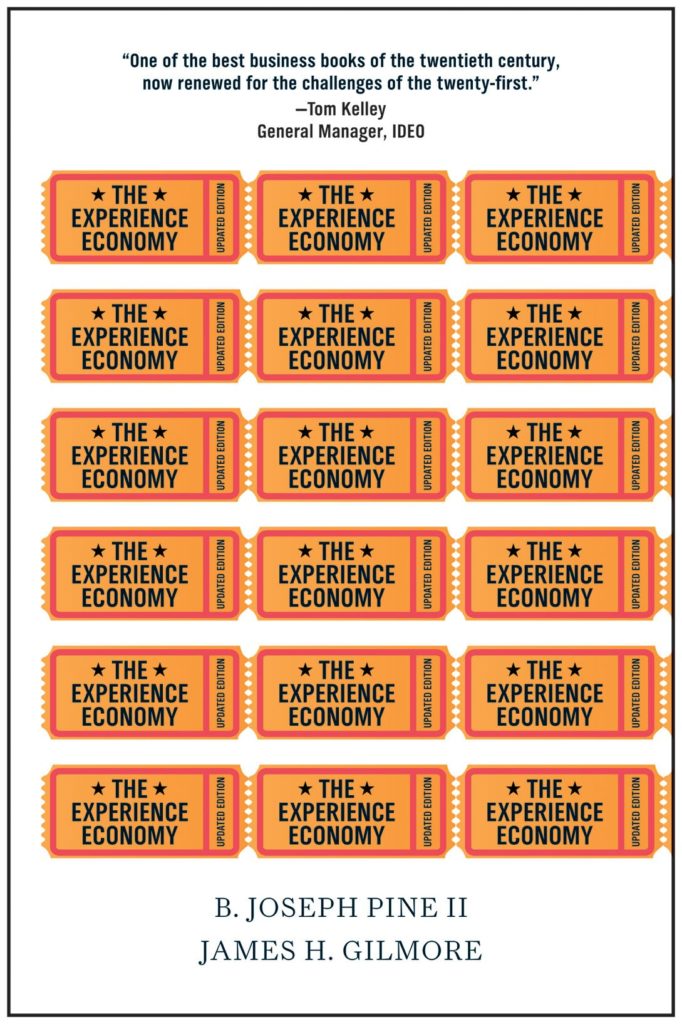In a groundbreaking book published twenty years ago, two economists predicted, or at least presented, a theory that experiences would be the next transformational economic trend. They detailed how civilization has moved from an economy based on goods to one based on services, and then convincingly demonstrated why we must move to an economy based more and more on experiences. These shifts are and will be driven by an increase in demand for mass customization. As they explain, “Mass customizing any good turns that good automatically into a service; and mass customizing any service turns that service automatically into an experience.”
Twenty years on, it seems the words in The Experience Economy were quite prophetic; we have become (or are at least in the process of becoming) a culture where experiences are more highly valued than goods and services. From personal experience, I can affirm that my family has spent far more money on “times” than on “things” in the recent past: trips and tickets over toys and trinkets, you might say.
Looking at the arts and culture sector, the sheer plethora of new “pop-up” museums, fan conventions, and large music festivals shows just how many more “curated” experiences are available now versus 20 years ago. It’s also interesting to note that these events (and the marketing of them) have evolved to meet the demands of younger, more culturally diverse audiences. For example, while producers once thought that live streaming would contribute to a decline in attendance at live events, the opposite has turned out to be the case. Sports, for example, make huge amounts of money on streaming services, and yet they still have sold out venues on game day.
When I first read the book as a much younger “arts person” twenty years ago, I thought, “Well that’s great news for the arts! We invented experiences! We’re going to be great at this!” But to be honest, given that the arts had a running start on the best way to profit from building experiences, I’m a little concerned that we’re not further ahead. Sure reports like this one demonstrate the value of the arts to the economy, but when I compare how the non-profit arts and culture sector is doing against our new, mostly for-profit, colleagues in the “experience” industry I think we’re coming up short. What could best practices in “experiential marketing” (yeah that’s a real thing) teach us about what works for larger brands in the live event space?
In the 2016 book, Experiential Marketing, the authors identify eleven “experiential pillars” that support the most successful experiential marketing campaigns. These are areas that large companies (think Target) explore when they create a special event or sponsor someone else’s. Given the fact that the arts are, by definition, an “experience,” I created some specific questions for each pillar that you should ask yourself about your events.
Remarkable
Is the event something people will want to attend? Is it worth it for them to leave home and commit time to this?
Shareable
Is the event a shared experience with other people, and can it be shared by them with others? (Answers are usually yes, in our case.) How can we make it more so? Can we encourage patrons to interact more with us and with each other?
Memorable
Does our audience carry the spirit or emotion of the event home with them? Does it provoke a strong enough feeling to make them want to come back? Are the memories generally positive in nature?
Measurable
Can we measure all of the things our events do? In terms of dollars, joy, resonance, and engagement?
Relatable
Do our events connect with what our audience wants and needs? Does it resonate with them? Does our programming reflect our mission and our audience?
Personal
Is there an element of the event that makes patrons think something has been done just for them? Is there an element of surprise or personalization, like greeting people by name?
Targetable
Are we able to create experiences-within-events that are targeted to our audience? Can we offer more intimate experiences as part of the overall event?
Connectable
How do our events support other areas of our mission, or how do those other areas create opportunities for additional events? Are we taking advantage of every opportunity to tie the event back to the patron, the community, the art, the artists?
Flexible
Do we have a strategy that minimizes the sacrifice our patrons need to make to engage with us? Are we mindful of friction in price, timing, programming, and giving?
Engageable
Do we provide ways for the event to be a two-way interaction? Do we ask the audience to DO something so that the engagement isn’t just one way?
Believable
Do we deliver on what we promise? Does our work throughout the entire experience align with our brand and deliver on our mission?
Next time you’re looking for a topic to discuss with your staff, your board, or even your patrons, ask them how they feel you’re addressing these eleven needs. The answers you surface will almost certainly impact the way you think about your events moving forward. Here’s what we already know, as the experience economy continues to grow… the more thought you give to the experience, the more thought your patrons will give to you.

